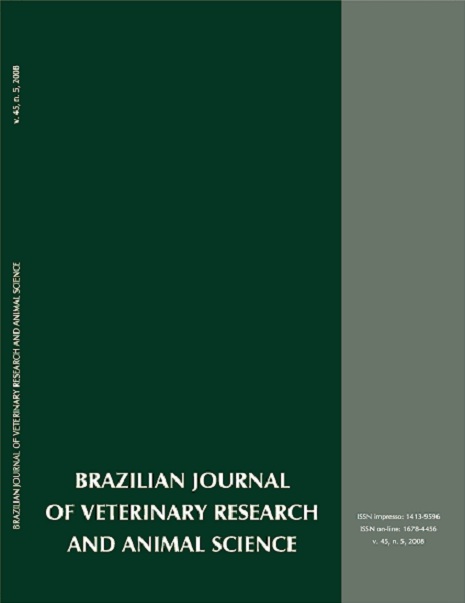Evaluation of electroacupuncture in bone healing of radius-ulna fracture in dogs
DOI:
https://doi.org/10.11606/issn.1678-4456.bjvras.2008.26674Keywords:
Electroacupuncture, Bone healing, Fracture, Radigraphic optical densitometry, DogsAbstract
Acupuncture promotes peripherical sensory stimulation and local and distant release of neuropeptides and can influence bone healing. The aim of this controlled and prospective clinical study was to evaluate the effects of electroacupuncture (EA) in bone healing and bone mineral content of canine radius-ulna fracture after closed reduction and external immobilization. Ten dogs with radius-ulna fractures were randomly allocated to 1 of 2 treatment groups. Group 1 dogs (n=5) received percutaneous EA immediately after closed reduction and external immobilization; after this first treatment, the frequency of application was twice a week during 4 weeks. Group 2 dogs (n=5) did not receive EA treatment. Radiographic score (RS) system and Radiographic optical densitometry (ROD) were used to assessment of fracture healing at the first day of clinical evaluation (M1), 30 days (M30) and 45 days after treatment (M45). Values of P<0.05 were considered significant. Mean±SD ROD values (mmAl) between groups 1 and 2 did not differ significantly (P=0.15) at all periods, respectively M1 values (4.94±0.94; 4.3±1.14), M30 (5.19±1,24; 4,91±1.45) and M45 (5.16±1.12; 5.31±1.71). Mean±SD RS values of group 1 at M30 (2.8±0.83) was significantly different (P=0.003) from M45 (4.6±0.54). However, mean±SD RS values of group 2 at M30 (4.4±1.51) was not significantly different (P=0.30) from M45 (5.16±0.75). Comparisons of mean±SD RS values between groups 1 and 2 showed no significant difference at M30 (P=0.07) and M45 (P=0.19). Results demonstrated that EA treatment did not accelerate bone healing and did not enhance bone mineral density in canine radius-ulna fracture during the 45 days of follow-up.Downloads
Downloads
Published
2008-10-01
Issue
Section
UNDEFINIED
License
The journal content is authorized under the Creative Commons BY-NC-SA license (summary of the license: https://
How to Cite
1.
Hayashi AM, Matera JM, Sterman F de A, Muramoto C, Cortopassi SRG. Evaluation of electroacupuncture in bone healing of radius-ulna fracture in dogs. Braz. J. Vet. Res. Anim. Sci. [Internet]. 2008 Oct. 1 [cited 2025 Apr. 6];45(5):339-47. Available from: https://www.revistas.usp.br/bjvras/article/view/26674





